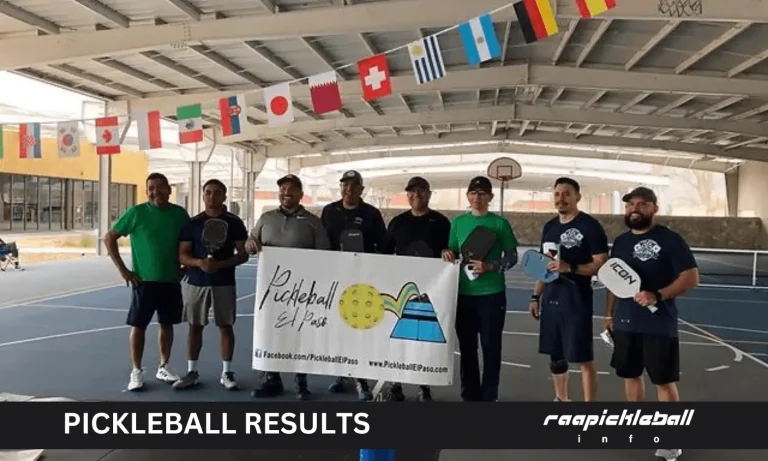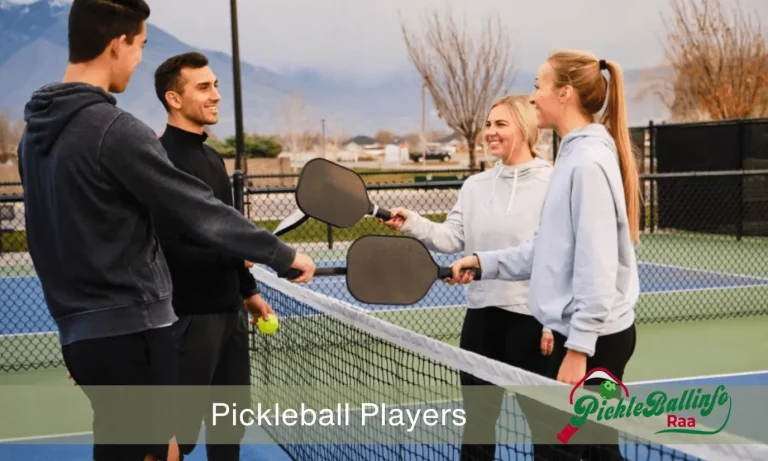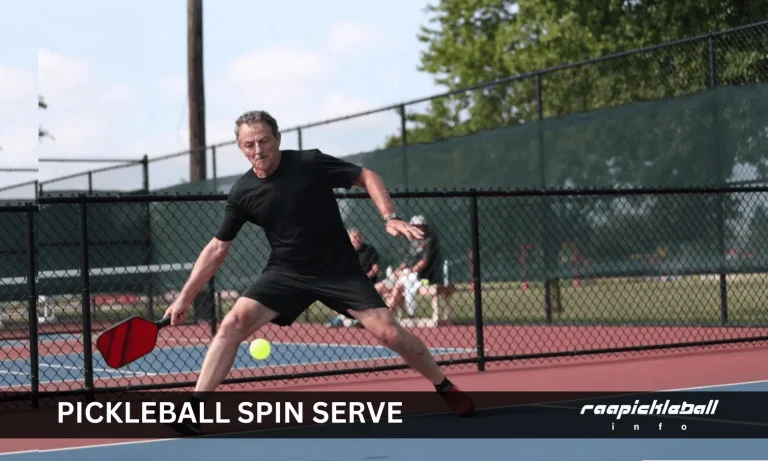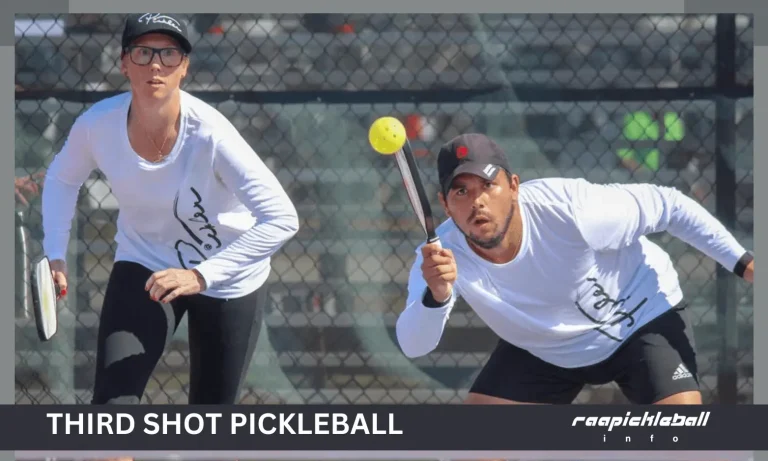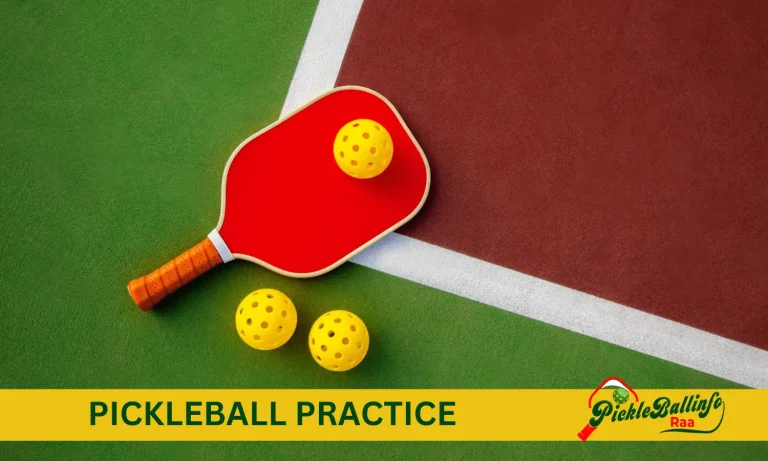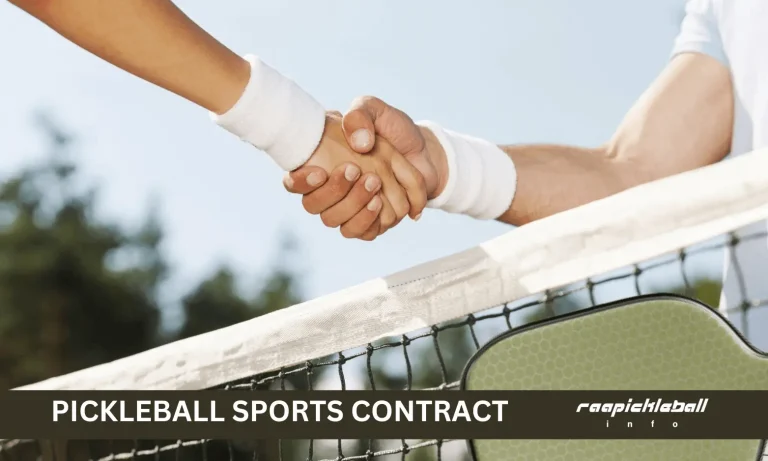Pickleball is an increasingly popular sport due to its exciting gameplay and accessibility. Among the skills necessary to excel in this sport is mastering various shots, which is crucial. This blog will explore 10 pickleball shots that can transform your game.
Info Table
Shot Type | Execution | Purpose | Key Points |
Volley | Hit the ball out of the air before it bounces, usually near the net. | Quick reflex action to control the ball and return it over the net. | – Quick reflexes- Compact paddle movements – Short backswing and follow-through – Focus and accurate response |
Third Shot Drop | Delicately hit the ball over the net to drop gently into the non-volley zone. | To gain control by manipulating opponents with a strategically placed shot. | – Finesse and precise placement – Disguise speed and trajectory – Controlled spin |
Dink Shot: | An intentionally soft shot that clears the net and lands softly. | To tempt the opponent into errors by reducing time and forcing focus, especially near the net. | – Mastering controlled placement – Use extreme angles – Ability to exploit weaknesses |
Serve | It’s an intentionally soft shot that clears the net and lands softly. | To initiate each point with a purpose, aiming for accuracy and variation. | – Accuracy in targeting – Varying pace and placement – Commitment in execution |
Topspin Serve | Brushing upwards on the ball to impart overspin, making it dip sharply over the net. | To apply immediate pressure and limit the opponent’s options early in the point. | – Using physics for natural drop shot – Accentuated curved flightpath – Less reaction time for the opponent |
Groundstroke | Shots hit after the ball bounces, including various techniques like topspin drives or flat shots. | To shape the volleys at the net by executing varied strokes based on situation and strategy. | – Focus on the ball and court awareness – Decisive footwork – Explosive movement to position |
Lob | Underhand serve to target the deep corners of the opponent’s service box. | To turn defense into offense by destabilizing the opponent’s momentum and regaining control. | – Precision and disguise – Using height and depth in the shot |
Cross Court Dink | A dink at a sharp angle floating to the opposite corner of the opponent’s court. | Scramble the opponent laterally and exploit weaknesses in their backhand or forehand return. | – Testing opponent’s footwork and court coverage – Exploiting weaknesses in returns – Opening new strike zones |
Overhead Smash | Hitting a mid-court ball with force downwards towards the opponent. | To capitalize on faulty lobs or net cord dribblers with a high-velocity downward strike. | – Mastering footwork and torso uncoiling – Transferring momentum into the paddle head – High-velocity impact |
Drive | Assertively struck shot with a low, fast flight path, executed with full paddle extension. | Apply pressure by moving the opponent out of position or forcing a weak return. | – Solid mechanics and weight transfer – Use of topspin or backspin for trajectory alteration – Aim for pace and depth in shots |
1. Volley
The volley is a critical pickleball shot, where you hit the ball out of the air before it can bounce. Volleys usually occur when both players are at the net in the “kitchen” area.” For more details, one must know about Pickleball Kitchen Rules for better gameplay. Mastering the volley requires quick reflexes to react to the fast-moving ball. Keep your paddle movements compact with a short backswing and follow-through. Let the ball come to you, and use your wrist to redirect the ball with control over the net. Volleys demand focus and the ability to respond instantly to aim accurately.
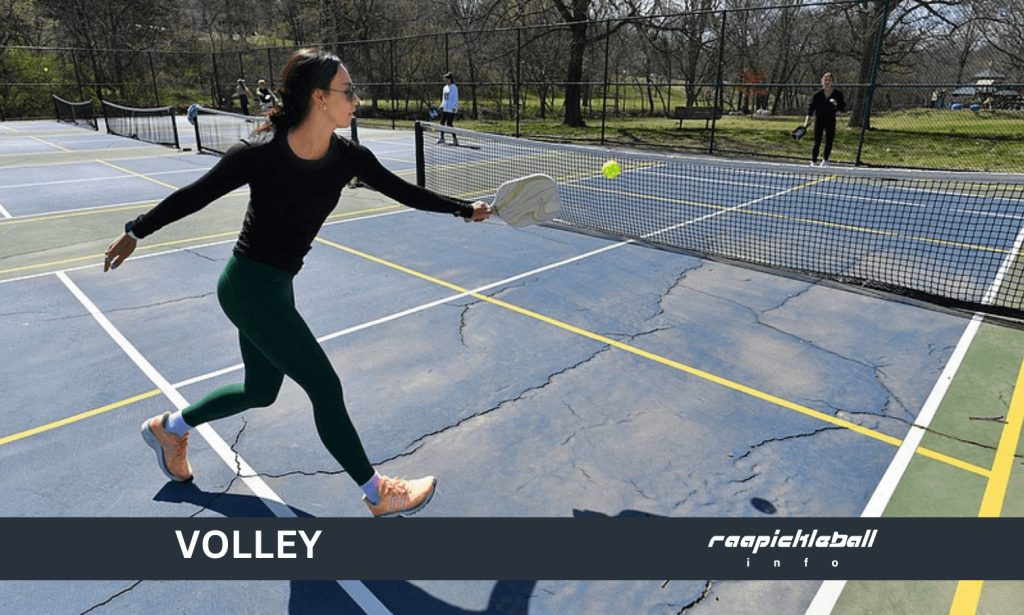
2. Third Shot Drop
The third shot drop is an effective pickleball strategy after the ball has been served and returned. Your goal is to delicately hit the ball so it floats over the net and then drops gently into the non-volley “kitchen” zone.” In a way, you are using the ball to manipulate your opponents. Perform this shot with finesse to place the ball precisely where you want. Disguise the speed and trajectory, then watch it spin towards the target area. When executed correctly, the third shot drop gains you control.
3. Dink Shot
The dink is a subtle yet vital weapon when playing near the kitchen line. A dink is an intentionally soft shot that clears the net and dies upon landing. The objective is to tempt your opponent into Errors by reducing Time and forcing focus. Dinks exchange the traditional hard-hitting rallies for a prolonged battle of precision and patience near the net. Extreme angles and an ability to exploit weaknesses make the dink a strategic cat-and-mouse game within a game. Master controlled placement and use change of pace dinks to outmaneuver opponents.
4. Serve
The serve initiates each point during a pickleball match. Unlike tennis, pickleball utilizes an underhand serve, which requires skillful execution. Accuracy is critical here as you target the deep corners of the service box on your opponent’s side. Every service should have a purpose and be struck with commitment. Vary pace and placement to disrupt their return. At higher levels, the serve can be used as an offensive weapon to win points outright or put opponents immediately on the defensive. For better performance, Let us visit Pickleball Rules.
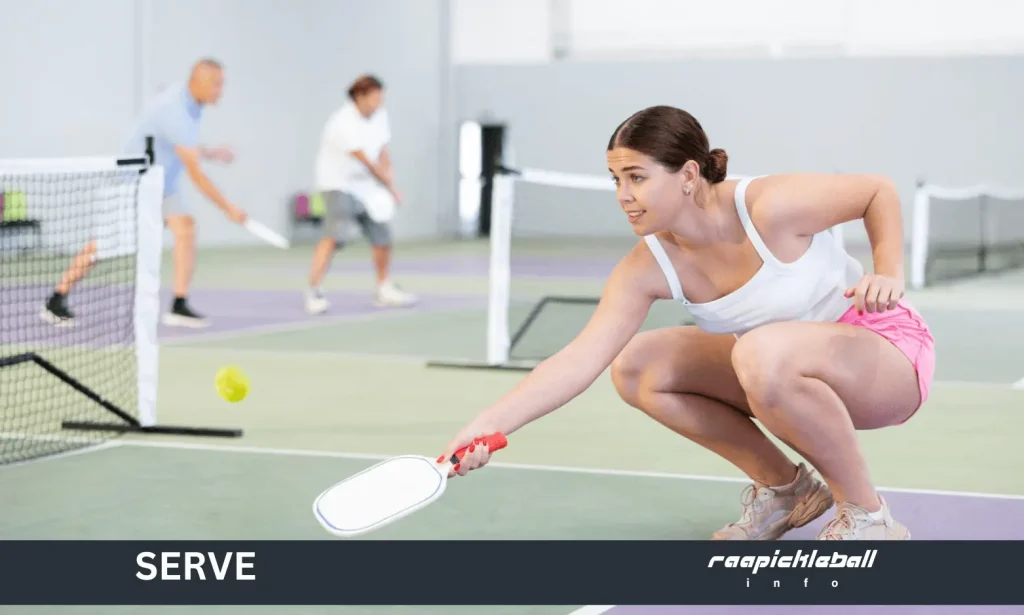
5. Topspin Serve
The topspin serve takes the basic serve up a notch by imparting forceful overspin onto the ball. By brushing upwards on the ball as you make contact, it kicks it into a higher arc so that it dips sharply downwards as it crosses the net. Its accentuated curved flightpath gives your opponent less Reaction Time as the ball bounds toward their feet for a troublesome return. The topspin serve is about using physics to augment the natural drop shot. Employing this applies immediate pressure and limits their options early in the point.
6. Groundstroke
Groundstrokes encompass shots hit once the ball bounces after the serve return. These include soft dinks, slicing shots, topspin drives, or flat, hard-hit shots. Execution will vary based on positioning, situation, and strategy. No matter the style, every groundstroke demands focus on the ball, court awareness, and decisive footwork. Move explosively to get your body behind the intended stroke, then calibrate your swing path and power transfer to direct the pace and trajectory of the ball. Each groundstroke shapes the ensuing volleys at the net.
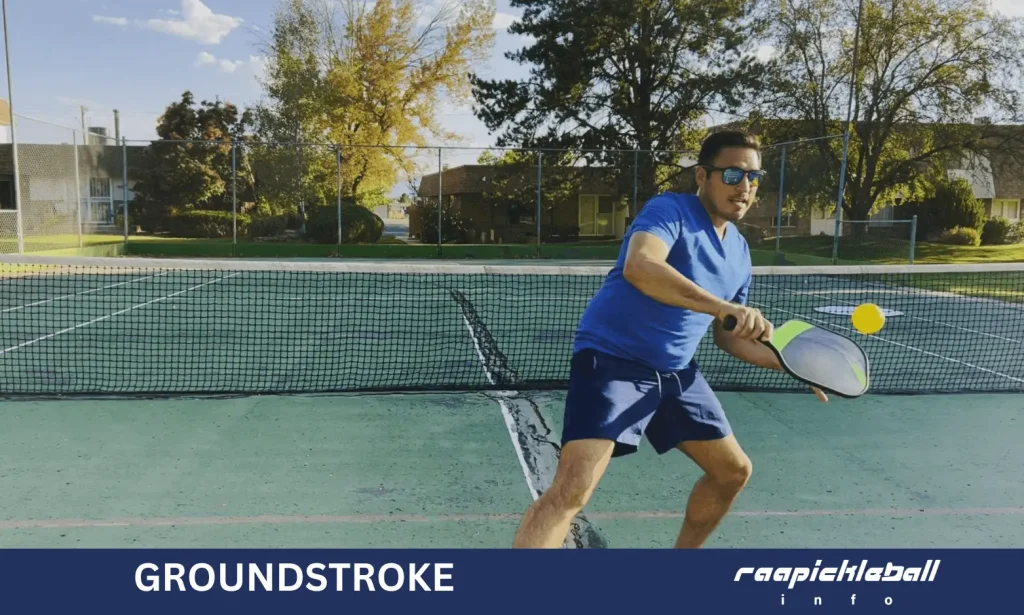
7. Lob
The defensive lob is an upward shot sent deep over the opponent’s designed explicitly to counterattack when they have advanced. Used judiciously, the lob can be a game-changer – instantly turning defense into offense. You can destabilize their momentum and regain point control by arcing the ball high over outstretched paddles as they approach the net. The lob is about seeing the court and using height plus depth in one rebooting stroke. Mastering precision and disguise will make your lobs a constant nuisance.
8. Cross Court Dink
The crosscourt dink integrates diagonality into the standard dink for increased deception. By caressing the ball at a sharp angle so it floats to the opposite corner of their court, you make them scramble laterally. It tests their footwork and court coverage. The crosscourt dink also exploits any weaknesses in their backhand or forehand return. Used sparingly amidst normal dinks, the crosscourt variant compels opponents into more errors by opening new strike zones you can aim toward.
9. Overhead Smash
The overhead smash pounces on any mid-court ball left hanging with devastating force aimed like a missile toward the opponent. Whether punishing a faulty lob or pouncing on a net cord dribbler, the smash allows you to hit down at max velocity. Master the footwork to sprint, plant, leap, and uncoil your torso to transfer all that momentum into the paddle head as it contacts the ball. This all-out Winner leaves opponents stranded and the ball annihilated.
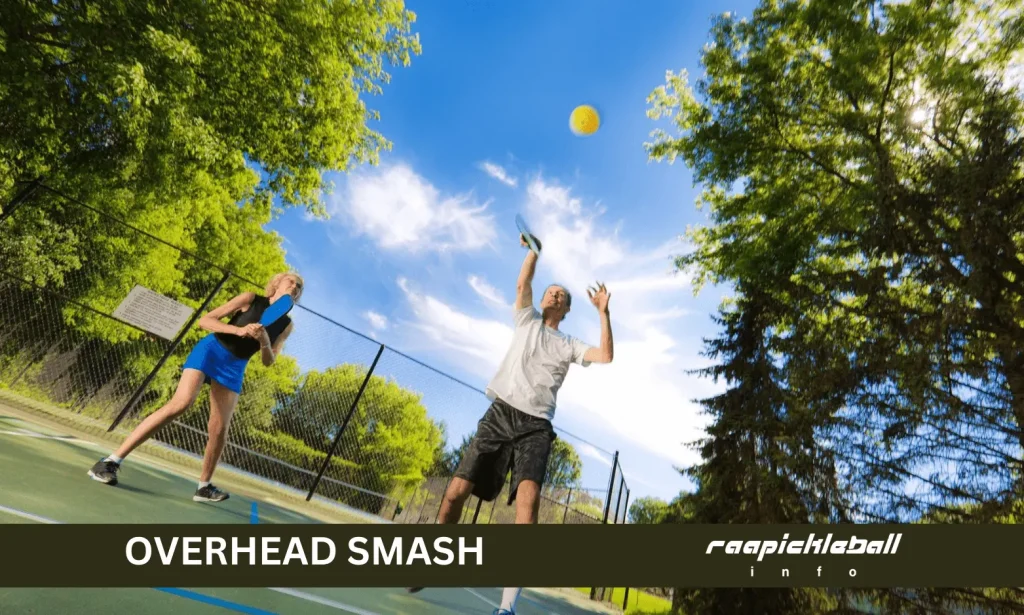
10. Drive
The drive is an assertively struck shot that sustains a low, fast flight path after being struck forcefully with full paddle extension on a forward swing. Drives are meant to apply immediate pressure by moving the opponent out of position or forcing a weak return. Crack flat drives deep to their baseline, or go for angled crosscourt versions. The pace and depth make returns extremely hard. Alternately, use topspin or backspin on drives to alter trajectory—master solid mechanics and weight transfer to hit punishing drives, which can culminate points.
Conclusion
Mastering these pickleball shots will significantly enhance your gameplay and strategy. Each shot serves a unique purpose and requires practice to perfect. So, grab your paddle, hit the court, and practice these essential pickleball shots today!
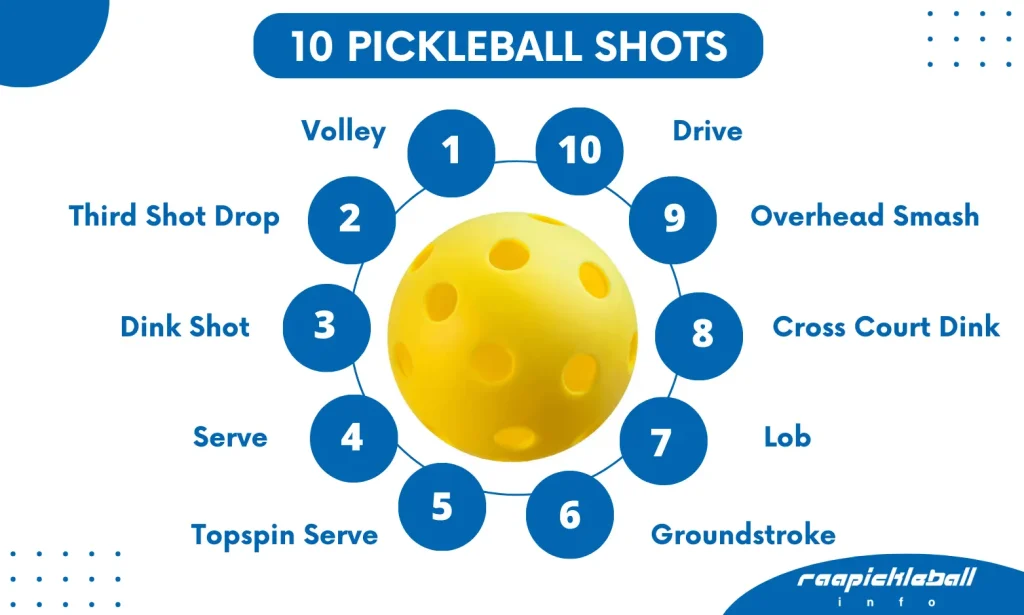
FAQs
What is the easiest pickleball shot to learn first?
The underhand serve is one of the most straightforward pickleball shots to master first. It initiates each point, and getting comfortable serving consistently is vital.
Which pickleball shot is most likely to end a point quickly?
The overhead smash is known as the “winner” shot” because it is tough for opponents to return when executed accurately with pace at their feet.
Why is the dink shot so important in pickleball strategy?
Dink shots help slow a game’s games and require extended rallies near the kitchen line, which can frustrate opponents into making mistakes.
What makes the third shot drop so tactical?
The finesse and precision required to land the third shot drop just over the net and into the non-volley zone giving players immense court control early in a point.
How can I improve my reflexes for better volleying?
Quick reaction time is critical for effective volleys, so try multiple rapid-fire volley exchanges to hone reflexes and paddle control on high-velocity shots.

